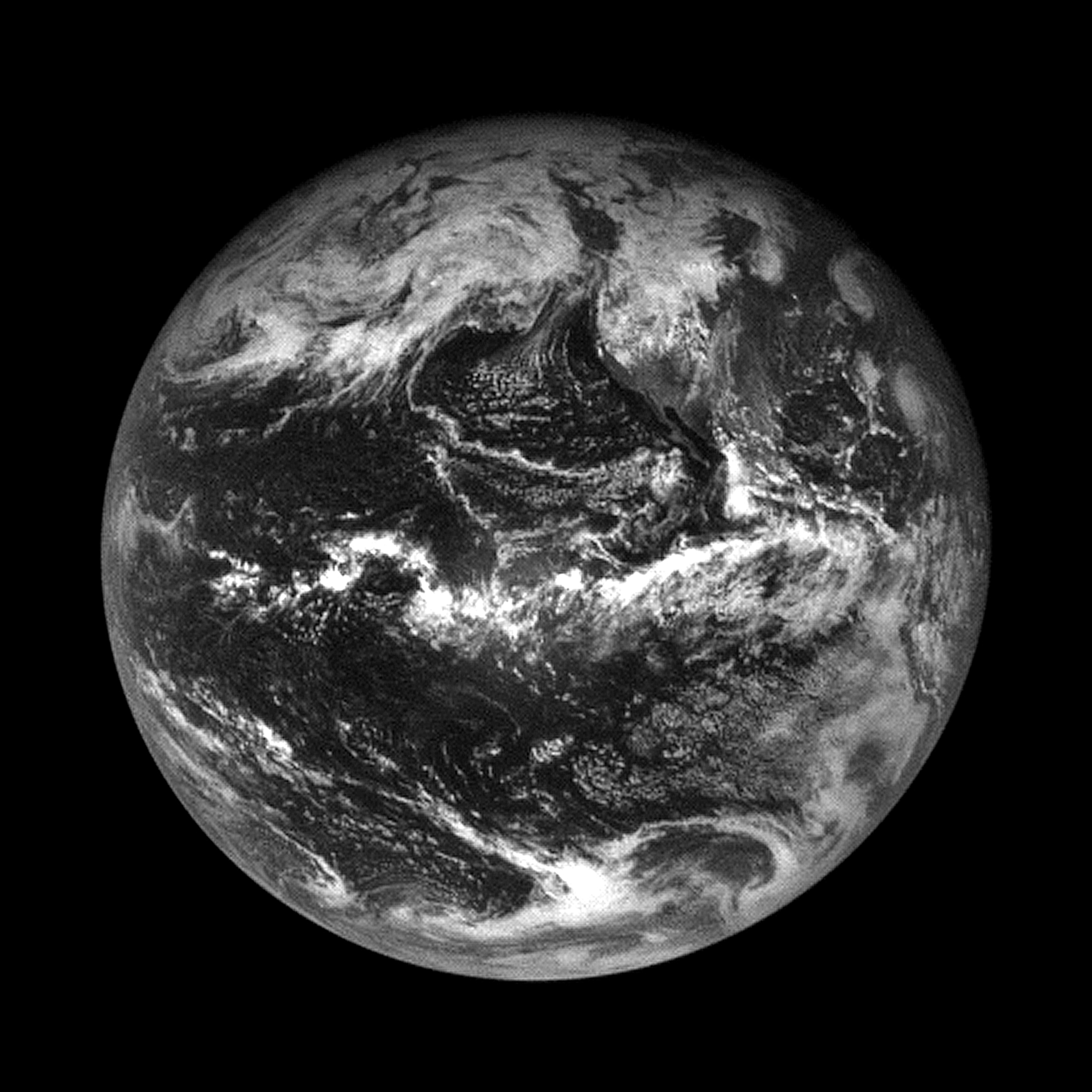NASA Asteroid Probe Snaps Farewell Photo of Earth and Moon

NASA's OSIRIS-REx spacecraft now has some nice photos of home to look at during its long flight to a distant asteroid.
OSIRIS-REx took a picture of the Earth-moon system on Monday (Sept. 25), a few days after performing a "gravity-assist" flyby of our planet that boosted its speed and helped set its course toward the 1,640-foot-wide (500 meters) asteroid Bennu.
The probe was 804,000 miles (1.297 million kilometers) from Earth and 735,000 miles (1.185 million km) from the moon when it captured the black-and-white image, NASA officials wrote in a description Thursday (Sept. 28). [OSIRIS-REx: NASA's Asteroid Sample-Return Mission in Pictures]
Also on Thursday, the agency released a shot of Earth that OSIRIS-REx took Sept. 22 — the day of the flyby — from a distance of 69,000 miles (110,000 km).
"The image has been rotated so that Earth's north pole is located at the top, and the Baja Peninsula is visible above and to the right of center," NASA officials wrote in an image description. "Cloud cover and the Pacific Ocean dominate most of the image, but Hurricane Maria and the remnants of Hurricane Jose can be seen in the far upper-right portion of the image, off the east coast of the United States."
OSIRIS-Rex took both of the newly released photos with its navigation camera. On Tuesday (Sept. 26), NASA released a color image of Earth that the spacecraft captured on flyby day using its MapCam camera.
During the flyby, OSIRIS-Rex zoomed a mere 10,711 miles (17,237 km) above Antarctica. The maneuver increased the probe's speed by 8,451 mph (13,601 km/h), NASA officials said.
Get the Space.com Newsletter
Breaking space news, the latest updates on rocket launches, skywatching events and more!

The $800 million OSIRIS-REx mission — whose name is short for Origins, Spectral Interpretation, Resource Identification, Security-Regolith Explorer — launched in September 2016.
If all goes according to plan, the spacecraft will rendezvous with Bennu in late 2018, then study the asteroid from orbit for more than 18 months. In July 2020, the probe will snag at least 2.1 ounces (60 grams) of material from the asteroid's surface; a return capsule containing this sample will come back to Earth, making a parachute-aided landing in the Utah desert in September 2023.
Scientists around the world will then study this asteroid material, analyzing it for clues about the solar system's early days and the role that dark, primitive asteroids such as Bennu may have played in seeding Earth with the carbon-containing building blocks of life.
Follow Mike Wall on Twitter @michaeldwall and Google+. Follow us @Spacedotcom, Facebook or Google+. Originally published on Space.com.
Join our Space Forums to keep talking space on the latest missions, night sky and more! And if you have a news tip, correction or comment, let us know at: community@space.com.

Michael Wall is a Senior Space Writer with Space.com and joined the team in 2010. He primarily covers exoplanets, spaceflight and military space, but has been known to dabble in the space art beat. His book about the search for alien life, "Out There," was published on Nov. 13, 2018. Before becoming a science writer, Michael worked as a herpetologist and wildlife biologist. He has a Ph.D. in evolutionary biology from the University of Sydney, Australia, a bachelor's degree from the University of Arizona, and a graduate certificate in science writing from the University of California, Santa Cruz. To find out what his latest project is, you can follow Michael on Twitter.










